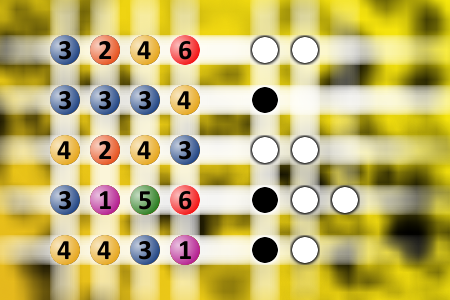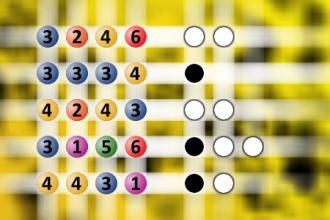Which is a winning combination of digits?
The computer chose a secret code (sequence of 4 digits from 1 to 6). Your goal is to find that code. Black circles indicate the number of hits on the right spot. White circles indicate the number of hits on the wrong spot.Correct answers: 77
The first user who solved this task is Jasmina Atarac-Pantelic.
#brainteasers #mastermind

A gynecologist who had lost in...
A gynecologist who had lost interest in his medical practice decided to change careers and enrolled in auto mechanic school.
He performed well in the course but was still shocked when he got an off-the-chart 200 on his final exam. He asked the instructor to explain the grade.
"I gave you 50 points for taking the engine apart correctly," the teacher said, "50 points for putting it back together correctly -- and an extra 100 points for doing it all through the muffler."
He performed well in the course but was still shocked when he got an off-the-chart 200 on his final exam. He asked the instructor to explain the grade.
"I gave you 50 points for taking the engine apart correctly," the teacher said, "50 points for putting it back together correctly -- and an extra 100 points for doing it all through the muffler."

